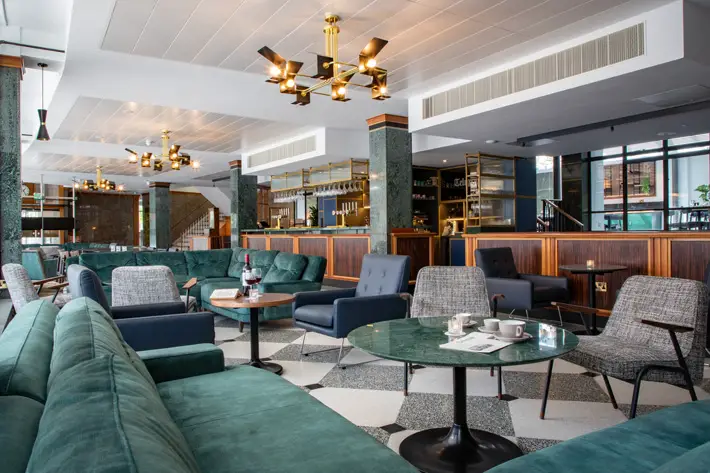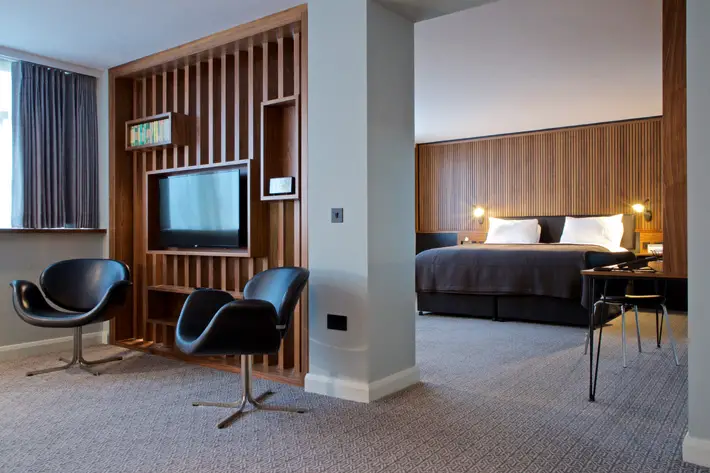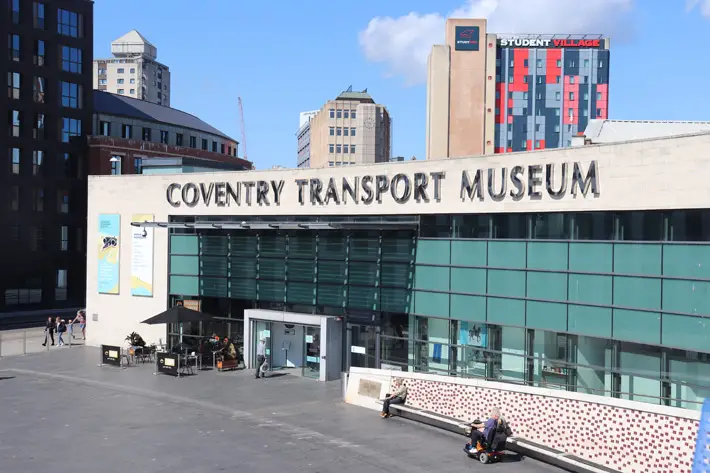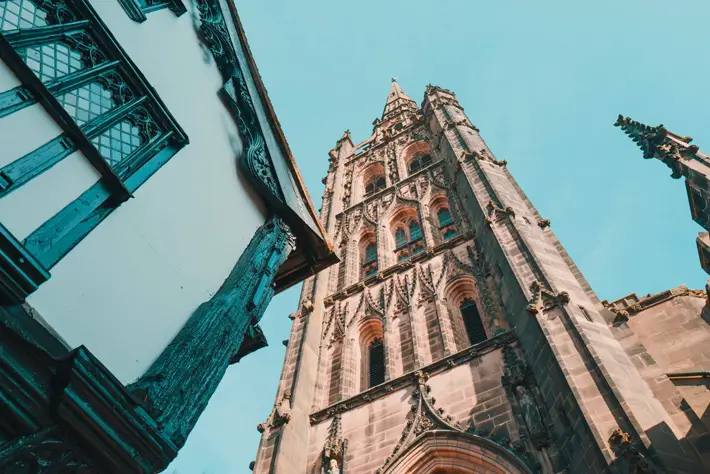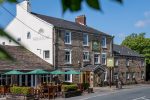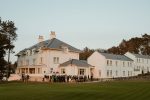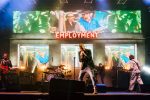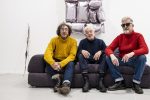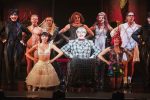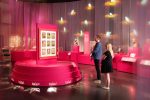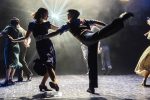The Telegraph Hotel, Coventry – Review
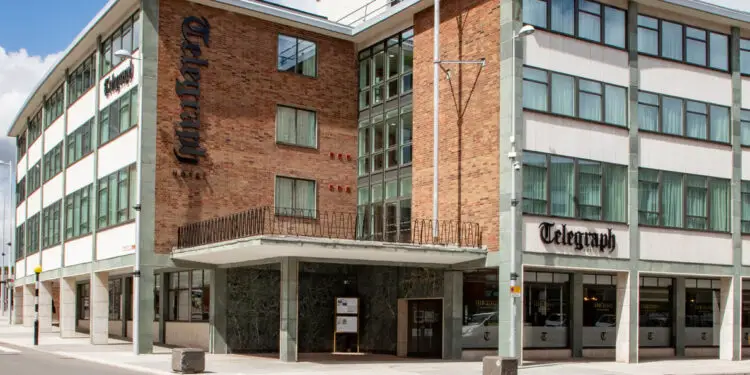
By Helen Johnston
As soon as I walked through the hotel doors, still bearing the name Coventry Evening Telegraph, I felt a wave of nostalgia wash over me.
I never worked there but I did work in several city newspaper offices just like it, in the days when papers were the beating heart of their communities. Slap bang in the middle of town was where the presses rolled churning out several editions a day, four in the Telegraph’s case.
Those front doors would once have been swinging back and forth all day as journalists and photographers set out to cover stories and then rushed back, interviews carefully stored in shorthand-covered notebooks and photos in reels of film. Members of the public too would have called in to buy a copy of the paper, or order a photo, or place an advert.
Newspaper offices have been disappearing from town and city centres over the past few years amid huge changes in the industry. So, it’s good to see that some of them like the Coventry Telegraph (the Evening was dropped in 2006 when it became a morning paper) have risen again with new purpose.
“Stylish”
Its premises in Corporation Street opened in 1959 and are now an 88-bed four-star boutique hotel following a £20m transformation. Where once reporters hunched over keyboards hammering out the latest scoops to meet the next deadline, guests now recline in sumptuous splendour.
A receptionist said many people who worked in the building had come back to stay in the hotel. She said: “We had one man who was in floods of tears looking round, he worked here for 20 years in accounts and said the reception was where his office used to be.”
The hotel was designed by Sheffield architects Hadfield Cawkwell Davidson and from the outside it still looks much like an office block. But now those glass front doors open on to the stylish Forme and Chase restaurant and bar where I dined on celeriac soup with sun blush tomato focaccia bread, followed by three bean and courgette cassoulet, and then sipped a Lady Godiva cocktail. All delicious by the way.
The designers have been sympathetic to the building’s history with nods to journalism at every turn. The hotel sign outside is styled in the same font as the newspaper masthead, my room was in the Compositors corridor and there is an Editors conference suite. Even the ‘do not disturb’ sign for the bedroom door has ‘On A Deadline’ on one side and ‘Chasing A Scoop’ on the other.
“Personality”
In my bathroom there was a copy of a front page from 20th June 1963 on the wall, when the splash was about the Profumo affair, and further down the page was a short story about the Leeds South by-election caused by the death of Labour leader Hugh Gaitskell. Those names still resonate nearly 60 years on.
On the top floor is the Lord Iliffe suite complete with hot tub and terrace. It’s named after William Iliffe who launched the Midland Daily Telegraph in 1891 which became the Coventry Evening Telegraph in 1941 and was owned by the family until 1987.
The hotel’s décor has a Mad Men theme and is in keeping with the mid-20th century style of when it opened as a newspaper office. There is a still a smell of newness about the place which opened last year in the middle of the pandemic. A risky decision but within six months it had been listed in the Sunday Times Top 100 Hotels, and it’s no surprise.
It has personality and charm and the spacious rooms are described as Big, Bigger and Best. Mine was Bigger and it lived up to its name, with plenty of room for a king size bed, a sofa bed, two armchairs and a coffee table.
“Thought-provoking”
Coventry has a compact city centre and the Telegraph Hotel is perfectly situated for exploring all of it on foot. Further along Corporation Street is the Transport Museum which is well worth a visit and pays homage to Coventry’s historic place in the car making industry, which at one time employed half of all men in the city.
It takes visitors on a journey from when bicycles first started being produced in the 19th century (Coventry was once the home of the British cycle industry) to the production of motorbikes and cars, among them such memorable names as Hillman, Rover, Triumph, Humber and Riley. I also discovered there were Singer cars, a name I’d always associated with sewing machines. Apparently one of the Singer family resigned from the sewing machine company to start making bikes, which in turn led to car production and by 1929 it was the third largest car maker in the UK.
A Daimler armoured car made in Coventry was used in the D Day landings and the luxurious Jaguar brand attracted such Hollywood legends as Clark Gable and Tony Curtis. The museum tour finishes with a look to the future of motoring with electric and driverless cars.
Coventry was UK City of Culture in 2021 and the Herbert Gallery and Museum (free entry) is hosting the world-renowned Turner Prize until the end of January 2022 which is very thought-provoking, with all the shortlisted exhibits being from artist collectives.
“Life and laughter”
Also still on is the Hyper-Possible event, which includes art exhibitions in several venues. One of these, called Proof, is in the Old Grammar School, which is 1,000 years old and worth a visit for the building alone. Exhibits include a mesmerising video of two heavily made-up people communicating with each other using sounds instead of words.
Other exhibits are in Coventry Cathedral, both the old and the new parts. Listening to the Anthropocene in the darkened ruins of the old cathedral was slightly spooky, and at first I thought the wind was blowing in, but the noises are generated to get visitors to tune in to the movements of the Earth’s tectonic plates. I wouldn’t have guessed.
This was my first visit to Coventry and one of the few things I knew about it was the cathedral was bombed during the Second World War. I hadn’t realised just how badly though until I saw the red sandstone ruins silhouetted against the winter’s sky. The Herbert Gallery has a series of photos taken in the aftermath of the raid, showing the rubble heaped high. It must have been truly a shocking sight. On my visit an outdoor skating rink was installed in the grounds for the Christmas holidays, bringing life and laughter back to what remains a sombre scene.
Some 554 people were killed during the bombing raid on Coventry on November 14 and 15, 1940 that destroyed the cathedral, and their names are remembered in an interactive display in the Herbert Gallery. The ruins of the old cathedral are also a lasting memorial to them.
“Reputation”
The new cathedral was built next to the old one, opening in 1962. It is linked to the old one by stone arches over a pedestrian area. Inside is beautiful with lots of glass letting in natural light and an amazing stained glass wall, its primary colours lit up by the winter sun shining through.
Just around the corner from the Herbert Gallery is the new Metropolis restaurant, which Ian Harrabin, co-owner of the Telegraph Hotel, was involved in helping to set up in his role as chairman of Coventry Historic Trust. The community-focused restaurant on Earl Street was another mid-pandemic venture which opened last summer but is going strong and earning a justified reputation as a great place to eat and hang out. It’s even got its own art gallery and meeting space upstairs.
Co-owner Fleur Sexton is committed to the regeneration of Coventry through education and employment. She is also CEO of training company PET-XI and they train all the young people working at Metropolis, many of whom come from disadvantaged backgrounds. Some may stay on, but most will move to other restaurants to continue their careers. “We’ve adapted during the pandemic and have started doing catering, takeaway deliveries and freezer food. We want this to be a safe and inclusive space,” she said.
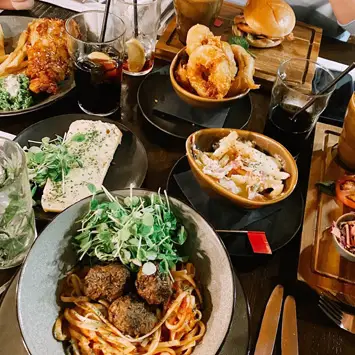 Metropolis uses local produce and alcohol and there are three separate menus, Carnivore, Vegetarian and Vegan. I chose the vegetarian sharing platter (trying to do my bit for the planet) and it was excellent, a wooden board piled high with a host of delights including olives, ciabatta, coleslaw, ‘meatballs’, pulled jackfruit and koftas. The lemon martini cocktail also went down well.
Metropolis uses local produce and alcohol and there are three separate menus, Carnivore, Vegetarian and Vegan. I chose the vegetarian sharing platter (trying to do my bit for the planet) and it was excellent, a wooden board piled high with a host of delights including olives, ciabatta, coleslaw, ‘meatballs’, pulled jackfruit and koftas. The lemon martini cocktail also went down well.
“New page”
Coventry feels like a city regenerating and its tenure as City of Culture is being followed closely by the Commonwealth Games this year. Coventry Stadium and Arena are two of the West Midlands’ venues hosting the games, another welcome boost. On my walks I noticed a city centre mural which revealed another sporting link – 8000 Olympic torches for the 2012 London games were made here.
Coventry’s high street has suffered along with others all across the country, with the loss of Bhs, Debenhams and Top Shop. However, its large pedestrianised shopping area has a pleasant layout, complete with Lady Godiva statue, and most of the other chain stores are still in evidence. I walked to the historic Spon Street which dates back to the 12th century, expecting quaint cafes and curiosity shops, but was disappointed. It seemed to be primarily restaurants and hair salons, perhaps because getting a haircut is one of the few things you can’t do online. The buildings are still worth a look though. One dating from the 15th century had been dismantled and moved from Much Park Street and then reconstructed in 1970-71.
The Canal Basin is also rich in history and would be a great destination for a walk in fine weather but it was drizzling with rain when I went so it was a quick look at the statue of 18th century engineer James Brindley and then back indoors.
The new, smaller Coventry Telegraph offices are near the canal, away from the main drag of the city centre. But it’s good to know the old place lives on, a new page turning in its history, and making headlines of its own in the story of the city.
The Telegraph Hotel: telegraph-hotel.com
Metropolis restaurant: metropolis-restaurant.co.uk
Coventry Transport Museum: transport-museum.com
